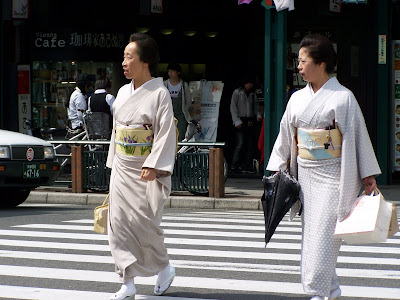La mañana del dia 2 de mayo nos levantamos temprano tras un reparador descanso, y desayunamos en el hotel, un bufet libre que estaba bastante bien (ensalada, pastas de estilo bastante occidental, y unos riquisimos triangulo de arroz con pescado envueltos en alga nori, que luego fueron aporte imporante en nuestra dieta japonesa).
 Bien temprano iniciamos el recorrido por los templos del parque de nara. Empezamos con el templo Kofuku-ji y su pagoda de cinco pisos. Nos sorprendió porque era un conjunto de edificios de tradición budista que estaba en el mismo casco urbano de Nara, justo antes de llegar al Parque de Nara.
Bien temprano iniciamos el recorrido por los templos del parque de nara. Empezamos con el templo Kofuku-ji y su pagoda de cinco pisos. Nos sorprendió porque era un conjunto de edificios de tradición budista que estaba en el mismo casco urbano de Nara, justo antes de llegar al Parque de Nara. 

Allí tuvimos nuestro primer contacto con los simpáticos ciervos que luego encontrariamos por todos los templos. Decir que este templo es de acceso libre excepto la pagoda de 5 pisos donde se paga una entrada. Todo el nucleo de templos de Nara situados alrededor del Parque (Kofuku-ji, Todai-ji y Santuario ) Kasuga se pueden recorrer comodamente en un dia a pie (acabas destrozado, te lo grantizamos).


Kōfuku-ji (興福寺) es un templo budista ubicado en la ciudad de Nara. Es la sede de la escuelo Hosso en Japón. Este templo fue fundado por Kagami no okimi (鏡大君), la primera esposa del Emperador Tenji quien buscaba mediante esta construcción que su amado esposo recuperara la salud.Fue construido inicialmente en Yamashina-ku, Kyoto en el año 669. En 672, el templo fue trasladado a Fujiwara-Kyo la primera capital totalmente planeada de forma artificial para este fin.

En el año 710 el templo fue nuevamente trasladado a una nueva capital de más reciente construcción Heijo Kyo hoy conocida como Nara.


Kōfuku-ji (興福寺) is a Buddhist temple in the city of Nara. The temple is the headquarter of the Hosso school in Japan.

Kōfuku-ji has its origin as a temple that was established in 669 by Kagami-no-Ōkimi (鏡大君), the wife of Emperor Tenji, wishing for her husbands’s recovery from illness. Its original site was in Yamashima (present-day Kyoto). In 672, the temple was moved to Fujiwara-Kyo, the first artificially planned capital in Japan, then again in 710, moved to its current place, on the east side of the newly constructed capital, Heijo-Kyo, today's Nara.
Kōfuku-ji was the Fujiwara's tutelary temple, and enjoyed as much prosperty, and as long as the family did. The temple was not only an important center for the Buddhist religion, but also retained influence over the imperial government, and even by "aggressive means" in some cases. The temple was damaged and destroyed by civil wars and fires many times, and was rebuilt as many times as well, although finally some of the important buildings, such as two of the three golden halls, the nandaimon, chūmon an the corridor were never reconstructed and are missing today.

Kōfuku-ji was the Fujiwara's tutelary temple, and enjoyed as much prosperty, and as long as the family did. The temple was not only an important center for the Buddhist religion, but also retained influence over the imperial government, and even by "aggressive means" in some cases. The temple was damaged and destroyed by civil wars and fires many times, and was rebuilt as many times as well, although finally some of the important buildings, such as two of the three golden halls, the nandaimon, chūmon an the corridor were never reconstructed and are missing today.





 Nara (奈良市) es la capital de la prefectura de Nara en la región de Kansai una, en el sur de Honshu, la isla principal del archipielago nipón. Fue capital del país en el Japón medieval, antes de que la capital se trasladara a Kyoto.
Nara (奈良市) es la capital de la prefectura de Nara en la región de Kansai una, en el sur de Honshu, la isla principal del archipielago nipón. Fue capital del país en el Japón medieval, antes de que la capital se trasladara a Kyoto.




































